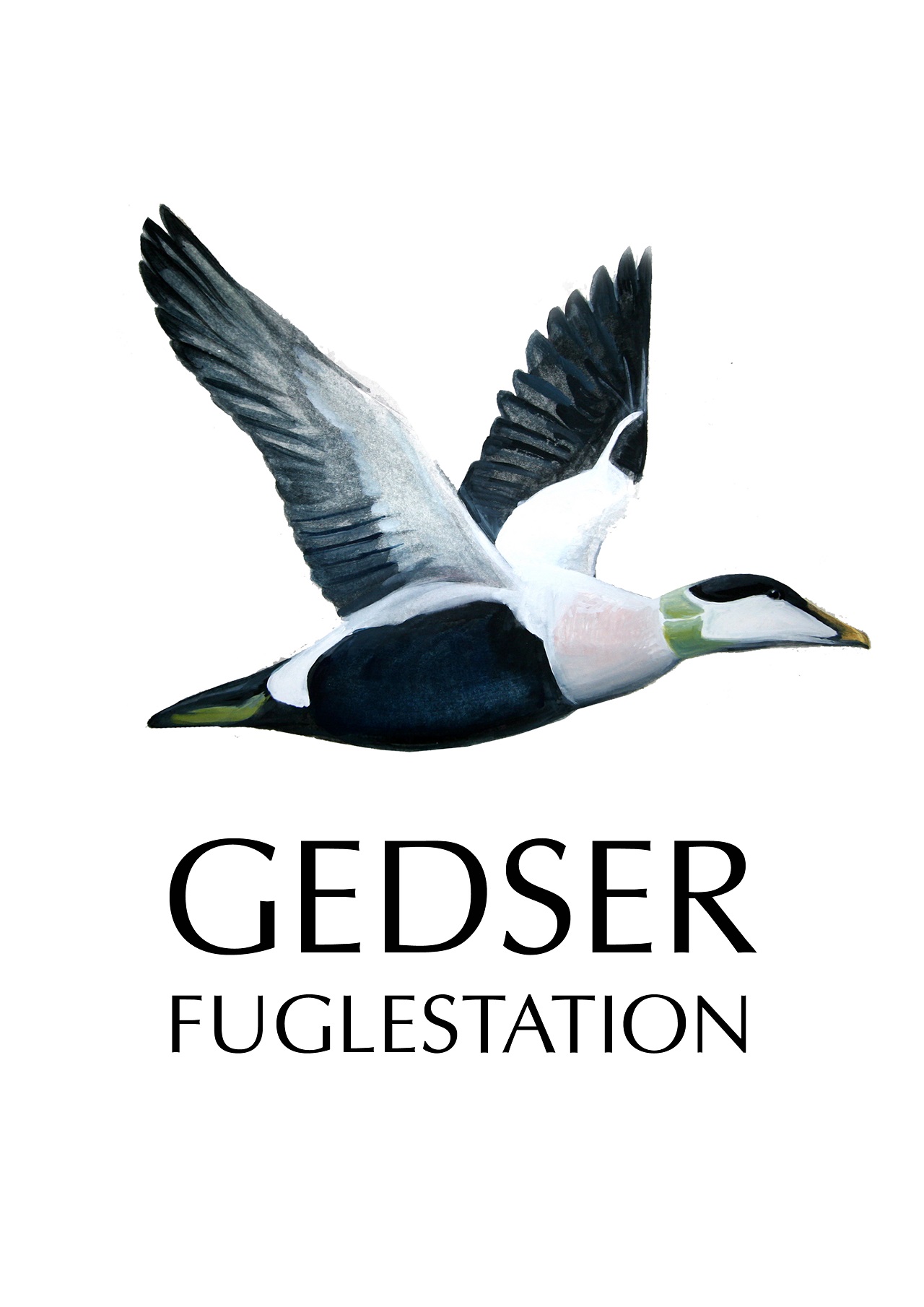Gedser Fuglestation Blog
Her på Gedser Fuglestations blog bringes korte nyheder i dagbogsformat om hændelser på fuglestationen.
Se indlæg fra måned: jan. (1)feb. (1)mar. (31)apr. (30)maj (31)juni (22)juli (20)aug. (31)sept. (30)okt. (31)nov. (27)dec. (13)
Last day in May and also for me this spring
It was my last day for this period at the Gedserfuglestation. I had a good time, a little more birds would have been fine, but that is how it is. You never know and each day is different.
This morning I was up early and the nets were open at 4 o'clock. First round brought only two birds but both interesting ones. The first bird I got out of the net was a male Red-backed Shrike (Rødrygget Tornskade) and the second one a Sedge Warbler (Sivsanger), the one with the two stripes on the head. This was the first catch of this year. It was a female because I saw a breeding patch. So, it must be a local bird. Later in the morning I caught a second male Red-backed Shrike. This brings my personal total for the two weeks at 13. This is by far a record for me.
There were only 14 birds today, 7 species, 12 new and 2 recaptures.
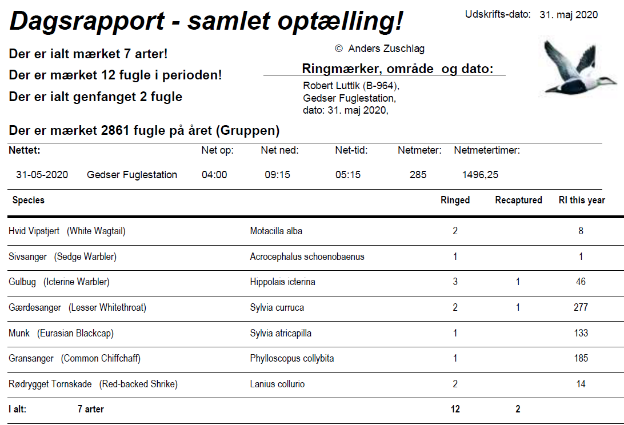
I closed the nets after 9 am and put all the data in the computer. Cleaned the house, packed my stuff and drove home. I will come back the first 2 weeks of September and hopefully corona will allow us to be with more people at the station.
I have two pictures for you today, one of the Tornskade and one of the Sivsanger
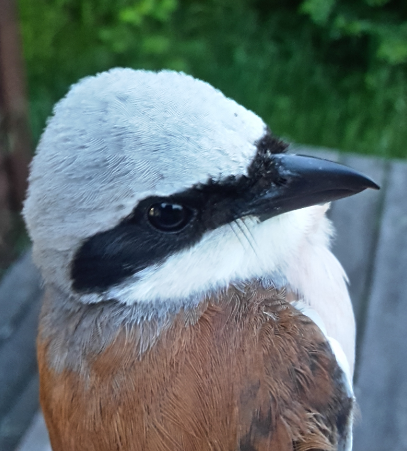
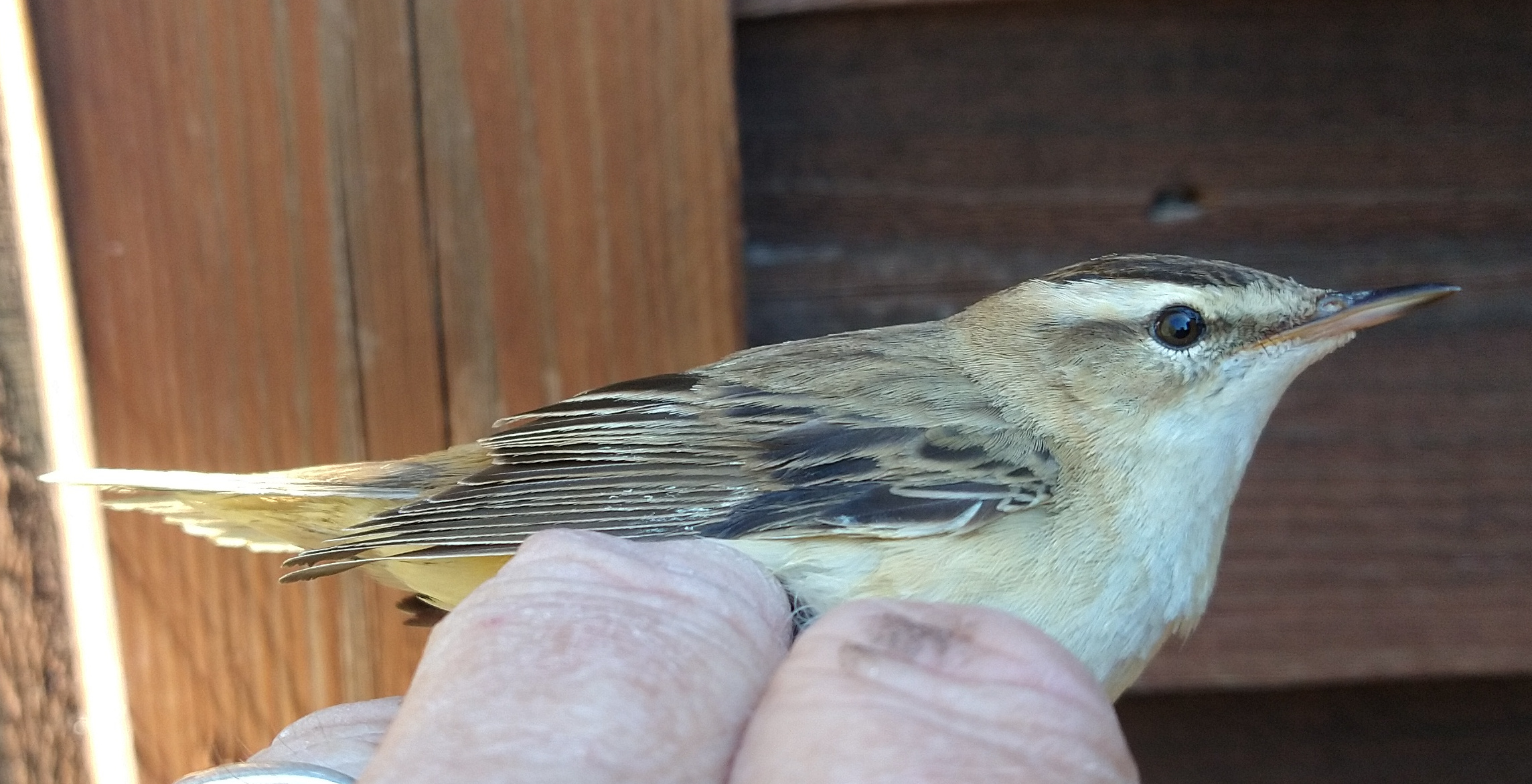
Till later this year and with kind regards
Robert
Det samme som i går
Again not many new birds in the garden. The day started with a round of zero and then one with one bird. So, I decided to open the nets near the pond again. This time I had 3 different swallow/martin species: 2 Barn Swallows (Landsvale), 2 Sand Martins (Digesvale) and 4 House Martins (Bysvale). One of the Barn Swallows was ringed in 2017 here at this location. Later in the morning I had 4 Starlings (Stær) in one of the pond nets and later also two in the garden. Five were birds born this year, so the first young are flying around while some other species only now start to breed.
In total today 31 birds (12 species, 24 new ones and 7 recaptures). See Table below.
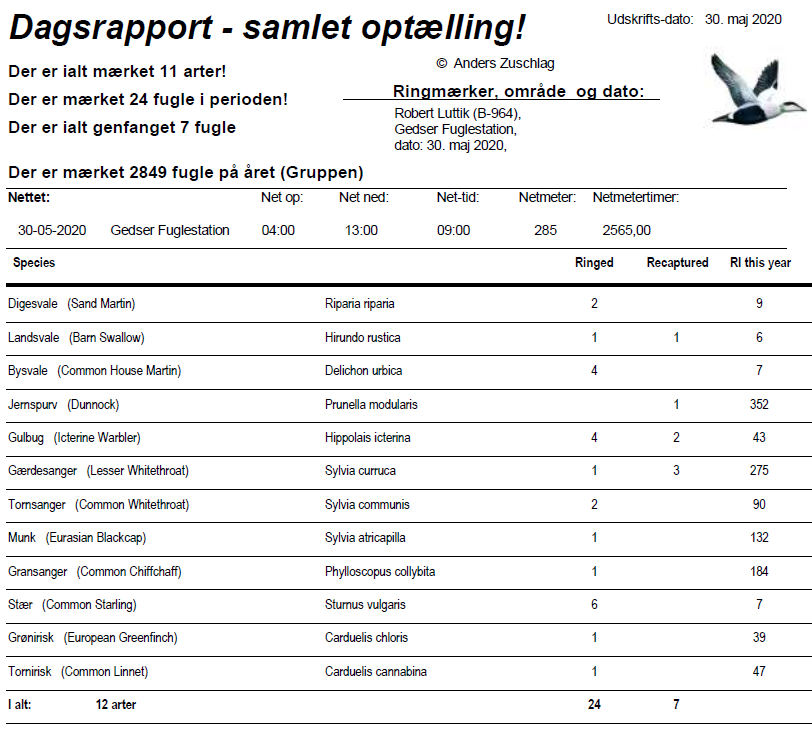 Was the month May of this year not such a good month as the years before? I do not think that that is the case. I have only three year 22018, 2019 and 2020. In the first year in total 667 new birds were caught, in 2019 916 and this year till now 738. So maybe 2019 was very good, but this year is slightly better than 2018. So nothing special.
Was the month May of this year not such a good month as the years before? I do not think that that is the case. I have only three year 22018, 2019 and 2020. In the first year in total 667 new birds were caught, in 2019 916 and this year till now 738. So maybe 2019 was very good, but this year is slightly better than 2018. So nothing special.
Tomorrow is my last day. Nets at the pond are not there anymore. Lets hope the garden will bring something special on the last day.
I have two pictures for you today: one of a young starling and one of an older female starling.
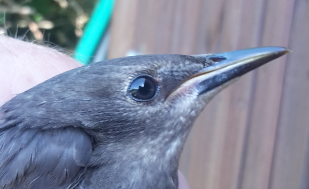
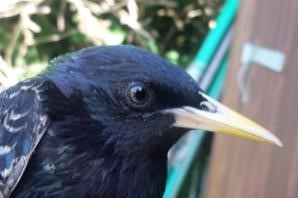
With kind regards
Robert
En rolige dag
A day with not so many birds. No wind which is good for catching birds. Very sunny which is not so good for catching birds. But also, the nets in the shadow did not bring birds. There were just barely any new birds and the local breeding birds know the nets are and do not fly often into the nets.
The day started with four birds in the first round including two Red-backed Shrikes (Rødrygget Tornskade). The second round again 4 birds including two Marsh Warblers.
After this start I decided to open some nets at the pond, which resulted in 2 Barn Swallows (Landsvale), 2 Sand Martins (Digesvale) and 1 Linnet (Tornirisk).
This is the story of the day. I closed the nets at 13.00 hours.
A total of 12 species were caught, 26 birds (22 new ones and 4 recaptures). See Table below.
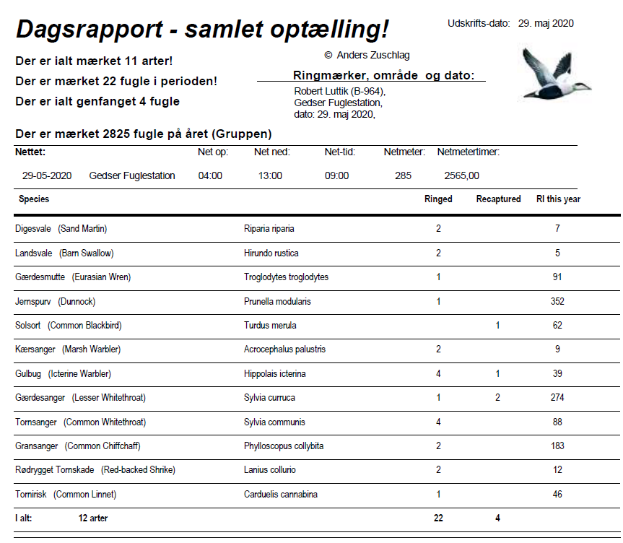
Tomorrow I will try to find out whether May 2020 is better or worse than the recent past years. Today I have made a small exercise regarding the Icterine Warbler (Gulbug). I used the data as recorded in Trektellen.nl and have printed below the graph made by this program. For the Gulbug the outcome is that 2020 is better than 2019 and 2018. The graph includes recaptures but because we try to catch birds in a standard way, I think that doesn't matter much.
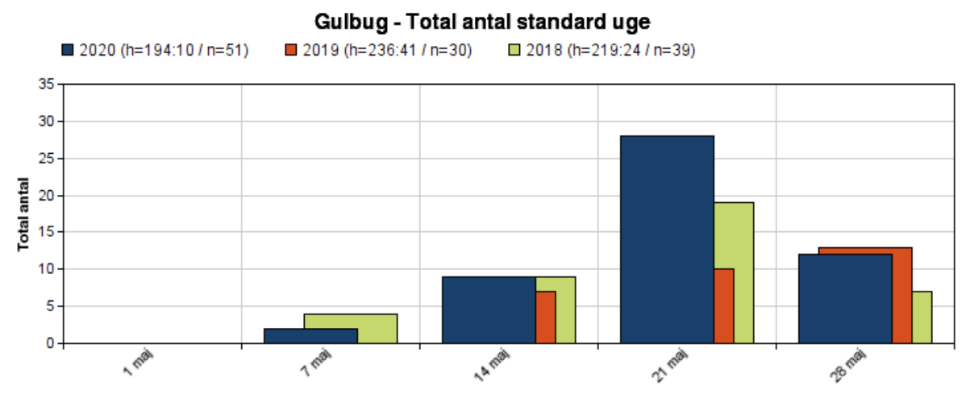
In the picture gallery today a picture of one of the Tornskader and one of the Landsvaler and a picture of the tail of this bird. Nicely long streamers but they can be even longer.
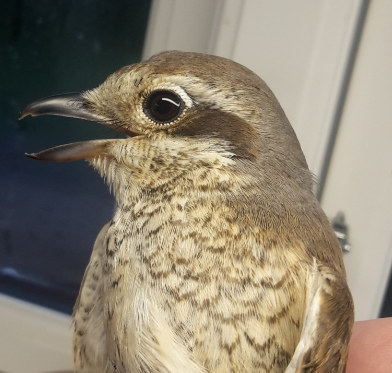
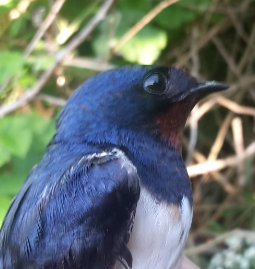

With kind regards
Robert
En meget gammel Gulbug
The first round today at 4.45 was a good round with 12 birds. Many birds in the first round is often an indication that there will be a lot of birds in the rounds to come. I was already thinking I should call Hans to help me, but the second round was rather disappointing. Only a few birds. So Hans was allowed to stay in bed. For the first time, there were a good number of birds from the Acrocephalus species group: Marsh and Reed Warblers (Kærsanger and Rørsanger).
But one particular Icterine Warbler (Gulbug) was the bird of the day. It was caught for the first time in the garden on the 29th of June 2012 as a 2k + (two years older). Which means it is at least 9 years old and soon even 10 years of more.
Other highlights of the day were a female Common Rosefinch (Karmindompap) and a female Pied Flycatcher (Broget Fluesnapper). There was also a singing male Karmindompap in the garden, but it did not fly into the nets. Maybe tomorrow.
Nets were closed early today (12 o'clock) because it was the day for maintenance in the garden: mowing of the grass and trimming of the bushes around the nets.
In total I caught 39 birds (16 species, 29 new and 10 recaptures). See table below.
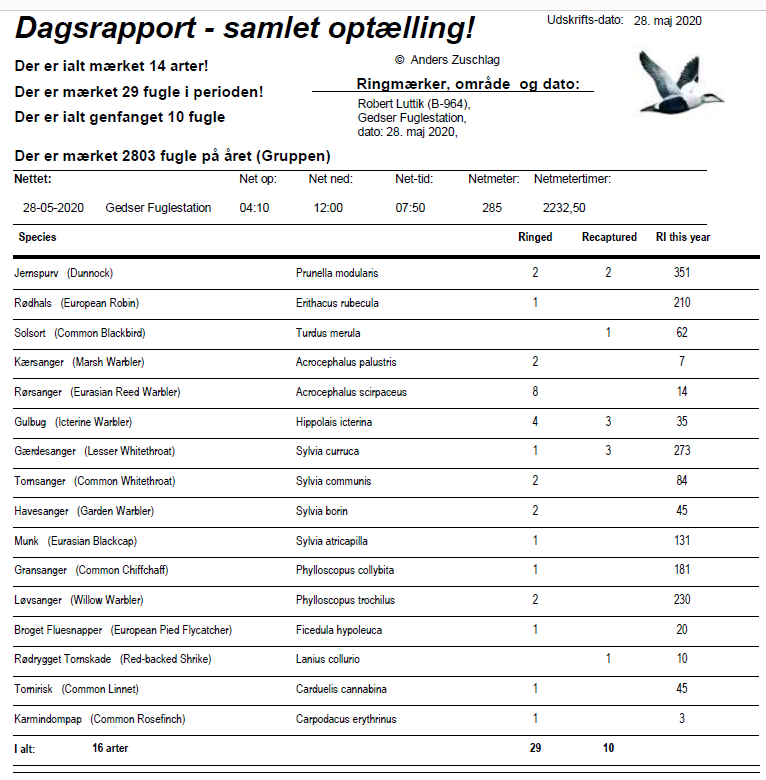 Only one picture today is one of the Reed Warblers.
Only one picture today is one of the Reed Warblers.
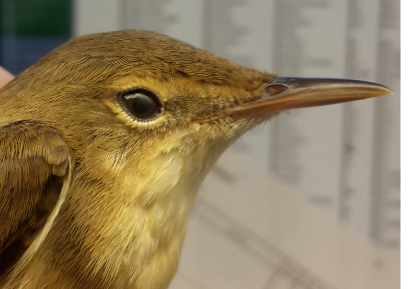
With kind regards
Robert
Bare en almindelig gransanger og svaler
Today I caught a normal Chiffchaff (Gransanger) and I took a picture of his wing formula. It will allow you to compare with the one of yesterday.
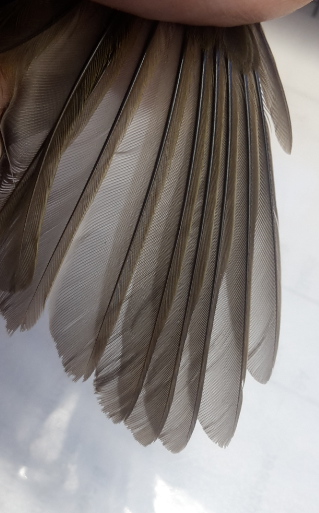
Note that P6 is shorter than P3, P4 and P5 and that P2 is as long as P7. I think this is a typical Chiffchaff (Gransanger) wing formula. So let's wait what the DNA analysis will bring, either a nice species or we have to adjust the ringers bible :) .
Today there were not many birds in the garden and I decided to open a few nets at the pond. Which was a lucky decision. I caught 2 House Martins (Bysvale) and 2 Sand Martins (Digesvale) and a Barn Swallow (Landsvale). But the last one was in one of the standard nets. Later I caught at the pond also a White Wagtail and a beautifull Yellow Wagtail. Most of the species you can find in the picture gallery below.
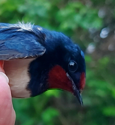
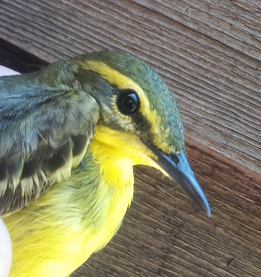
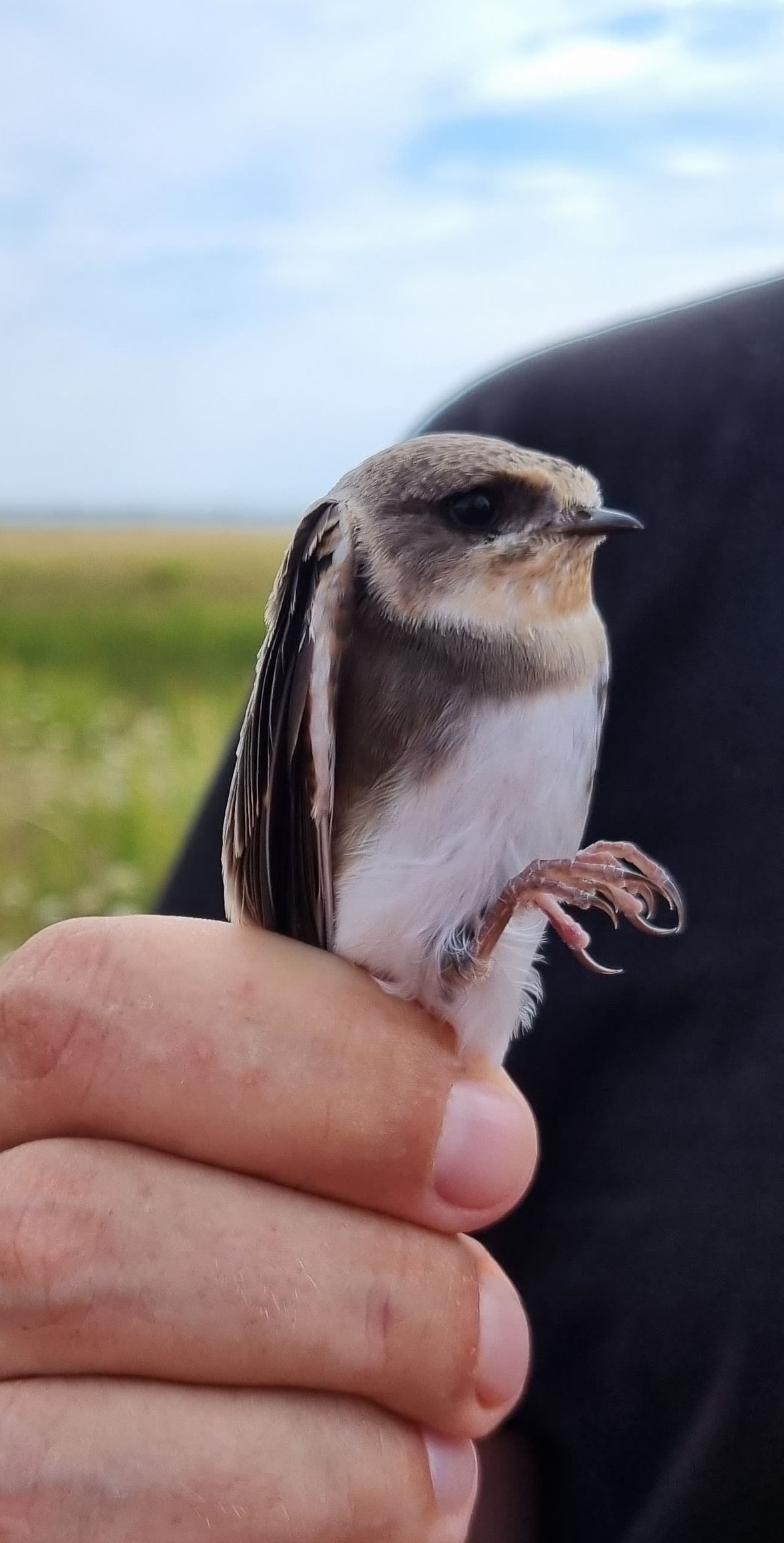
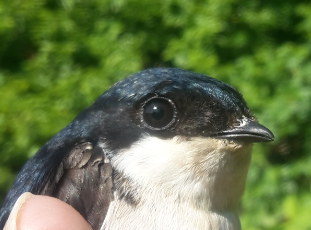
I caugth today 24 birds, 13 species 18 newly ringed and 6 recaptures. Again a Red-backed Shrike (Rødrygget Tornskade). I have to do it with a copy of trektellen.nl because I could not get the right one out the house computer here.
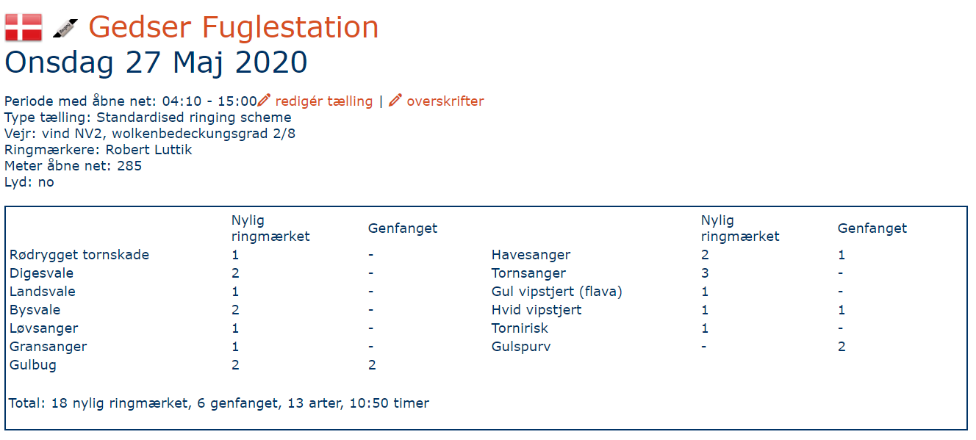 With kind regards
With kind regards
Robert
Strange chiffchaff
This morning I found a bird in one of the nets of which I thought it needed some attention. I found it browner than the Chiffchaffs (Gransanger) that I normally have in my hands. It was also a bit larger than the average Chiffchaff. I always check if it is Chiffchaff or not (primary 6 (P6) should be emarginated). At that moment I noticed that P6 was as long as P3, P4 and P5. Which I found a bit strange. Than I looked up the species in the "Identification Guide to Birds in the Hand", a kind of ringers bible.
And this is what I found:
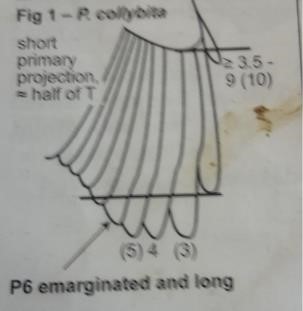
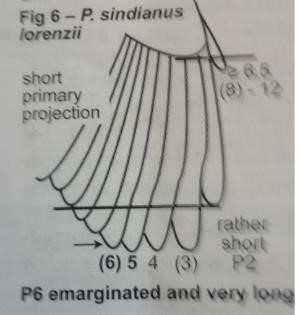
And in the next picture you find what I had in hand. You can also see that P2 is much smaller than P7 which is also different from the wing formula of the normal Chiffchaff.
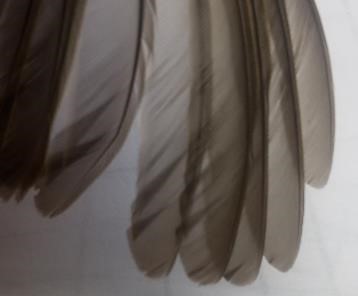
If you can think I was rather excited about this. The wing formula is the same as the species with the name Phylloscopus sindianus lorenzii. Nowadays they are considered to be two species. It could be a Bjerggransanger. An extremely rare species in Western Europe.
So I called Hans and we made a description and took some pictures (see below).
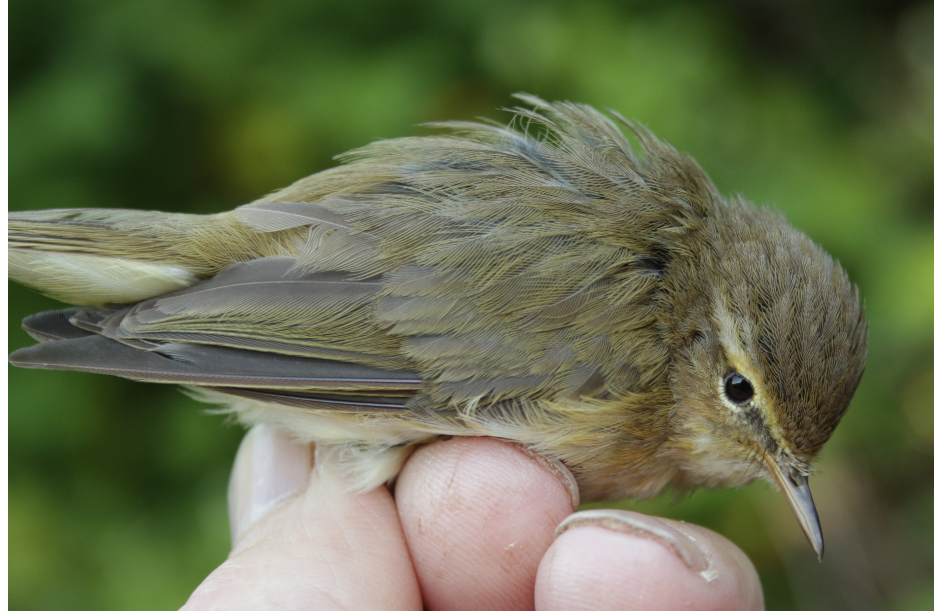
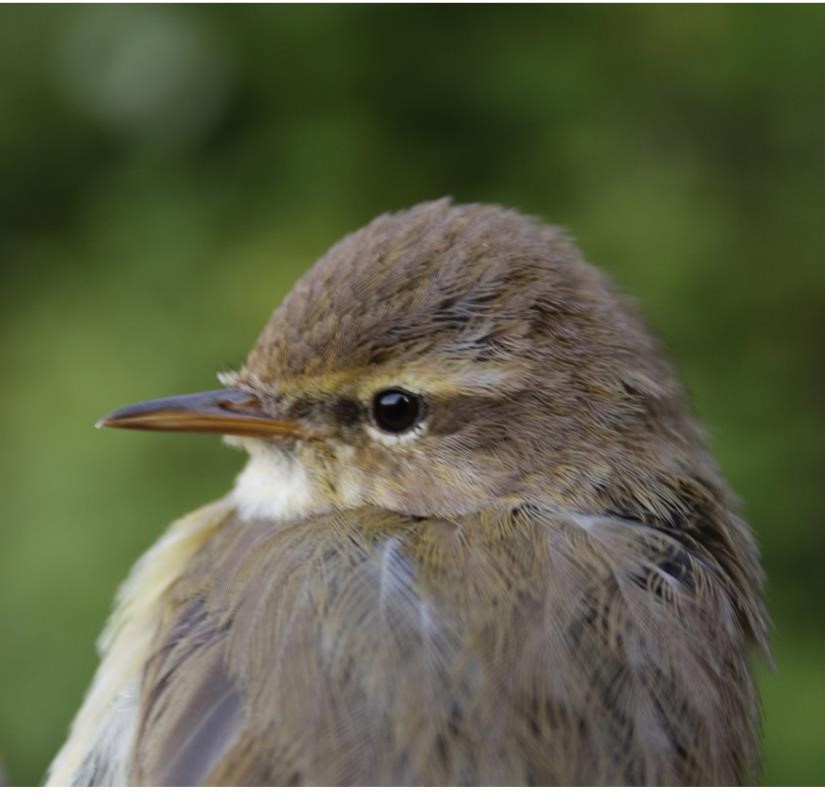 When you look up the Bjerggransanger (Phylloscopus lorenzii) than you will notice that the colors are not the same and therefore we have our doubts. Are colors disive / deciding or are structural features like the wing formula driving. I have no idea. On the other hand, the Mountain Chiffchaff or Eastern Chiffchaff (Phylloscopus sindianus) has a more yellow supercilium.
When you look up the Bjerggransanger (Phylloscopus lorenzii) than you will notice that the colors are not the same and therefore we have our doubts. Are colors disive / deciding or are structural features like the wing formula driving. I have no idea. On the other hand, the Mountain Chiffchaff or Eastern Chiffchaff (Phylloscopus sindianus) has a more yellow supercilium.
For me it is still a question, for the time being we put it as a normal Chiffchaff in the database, but we have taken a feather sample and will ask to perform a DNA analysis. So in about half a year we will know the definitive answer.
In total I caught 13 species today (36 birds, 33 new ones and 3 recaptures).
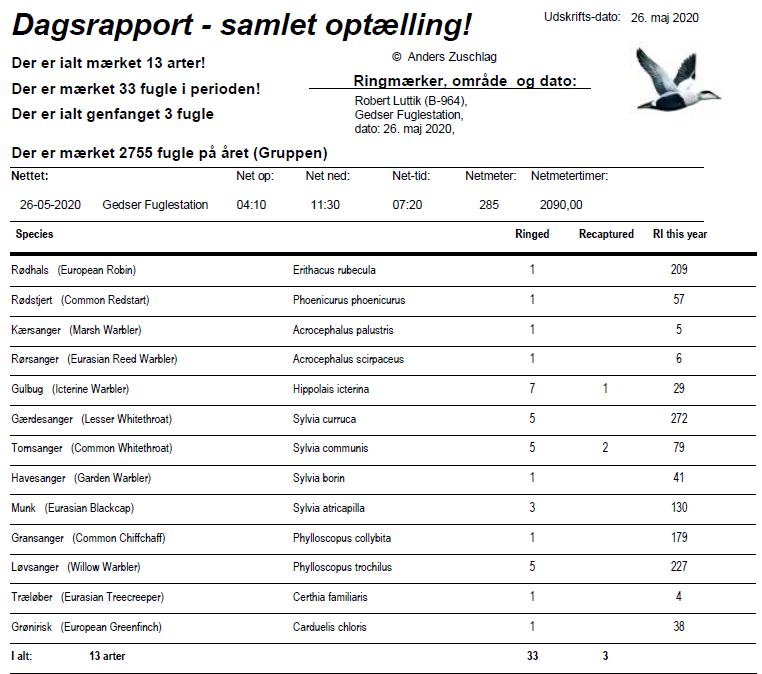
With kind regards and till tomorrow
Robert
Twice as much as yesterday
When I went out this morning there was still some wind and I did not expect many birds, also because there were not many birds moving around or singing. When I wrote to Hans that it was a little bit better than the day before and that I had 11 birds (around 7 o'clock). He wrote back: Super! Something special must come in the next days.
In total I caught 15 birds, 11 new and 4 recaptures (see table).
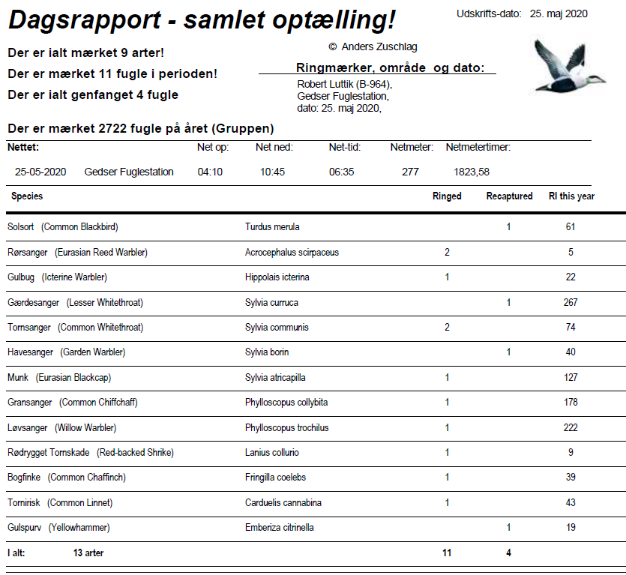
Today again a Red-backed Shrike. Eight birds in 6 days and 9 birds in total this spring, which is equal to last year (see graph) and more than the year before. This species is evidently doing well and we still have some weeks to go.
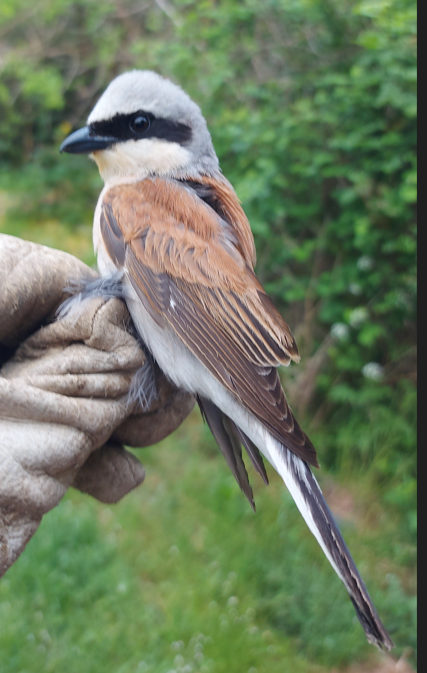 Graph is made by trektellen.nl in which database the results of Gedser can also be found.
Graph is made by trektellen.nl in which database the results of Gedser can also be found.
Bo made some pictures of the Shrike (Tornskade). Till now I was not bitten by this species, but as you can see holding it up for a picture did the trick.
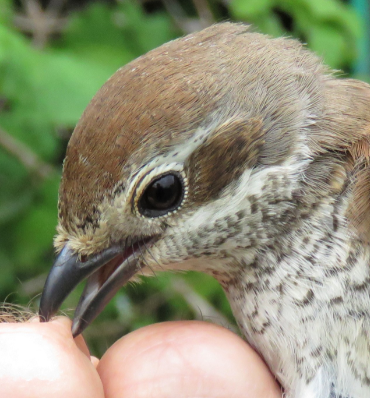
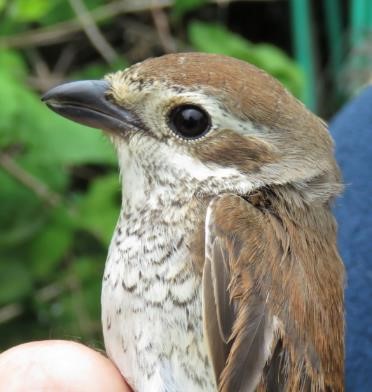
And in addition a close up of a Reed Warbler.
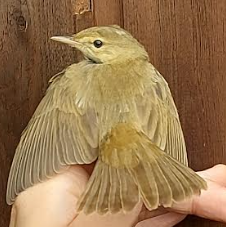
Part of the afternoon was spent repairing a mistnet (underline was broken). This is a tedious type of work, but worthwhile because nets are rather expensive and this net was not old at all and still in good condition for catching birds.
Like Hans I am also an optimistic person and I am looking forward to tomorrow.
With kind regards
Robert
Only seven birds
Not a day for many words (just too much wind). Only real good thing was that I heard a Common Rosefinch (Karmindompap) earlier in the morning. And in the very last round It was hanging in a net very close to the location were I had heard it.
Further no news and also no pictures today. See the humble list with captured birds below:
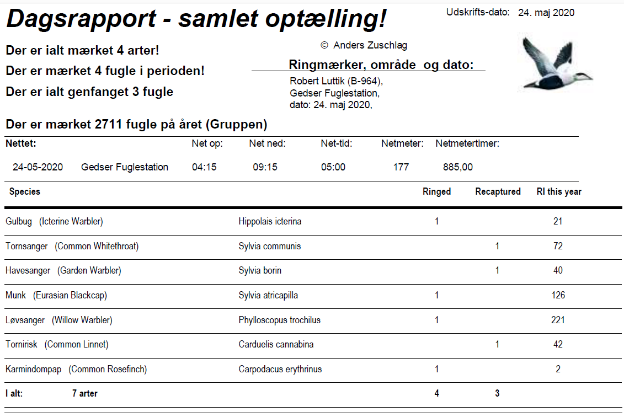
Hope tomorrow will bring a better day.
With kind regards
Robert
Little weather change resulting in more birds
When I woke up this morning I heard almost no birds singing and also when I opened the nets hardly any birds moving or singing. Even de first round had only two birds. So I was preparing for a day with not much birds. But the following rounds were better. Top species were Ictrine warblers (Gulbug) and Blackcaps (Munk) with each 5 birds and then 4 Garden Warblers (Havesanger) and to my surprise the next species was the Red-backed Shrike (Rødrygget Tornskade) with 3 females.
The day was also highlighted by 3 Marsh Warblers (Kærsanger) and 2 Reed Warblers (Rørsanger). Species out of a group of species that need some special attention.
The last bird I toke out of the net was a Coal Tit (Sortmejse). A species that I really like, such nice little birds (see pictures).
In total I had 14 species and 37 birds (30 new and 7 recaptures). Find the results below in the table.
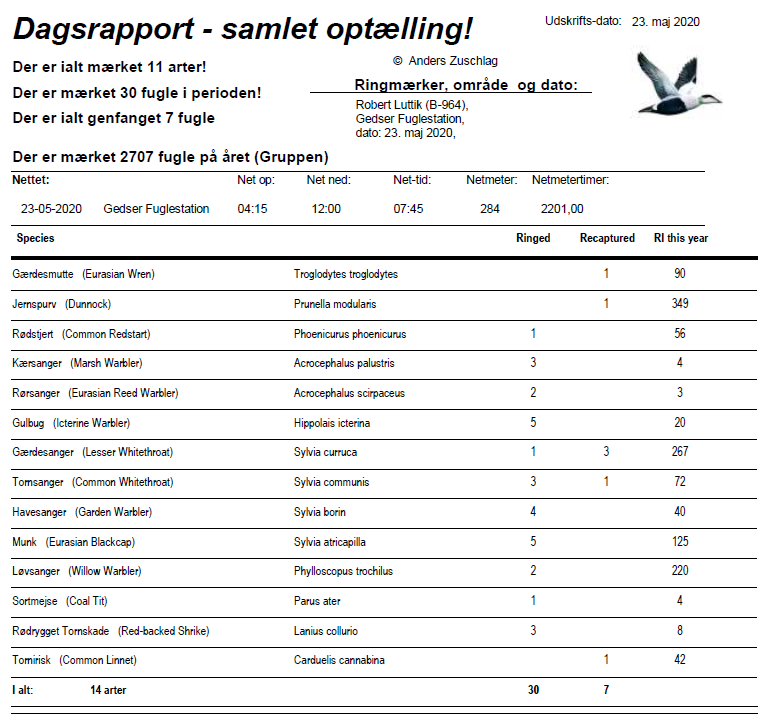
It is a bit strange to be the only ringer at the station at this moment. But it was my own choice, wanted to keep the chance of getting Corona as low as possible. But it is strange nobody around to talk to or discuss birds when you would like to have confirmation of your ideas. I also note that my eating pattern is changing. I am eating now at different times of the day. More in agreement with my early getting up and early to go to bed. Which is probably not strange. Let see what two weeks on my own will bring. Maybe I will be very happy to go home again :).
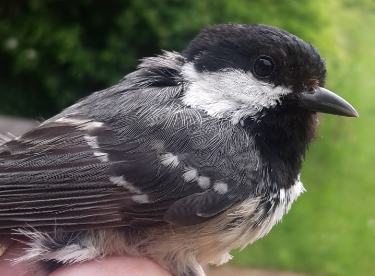
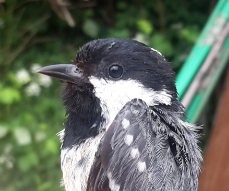
Another quiet day
Although I was very early today, the birds were just not there. A bit the same as yesterday. With the difference that I have no caugth on the lake (a bit too windy for the open place). Highlight again a Red / backed Shrike, number 5 of the year. A total of 18 birds, 8 new and 10 recaptures (see table).
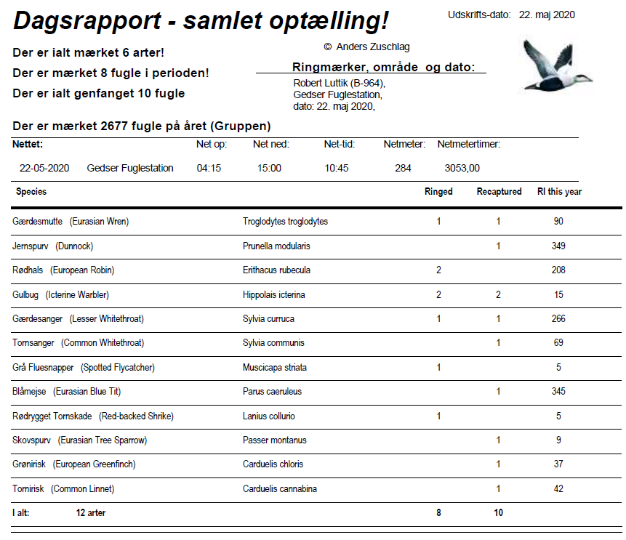
It is difficult to write anything on a day nothing is happening. There was a small family visiting the sation and Hans did the entertaining. The group was lucky because they were there when I had my best around five different species including the tornado. So they were happy.
In the morning an adult rosy starling was seen flying over the tip, but did not rest in the garden. Would have been a good one. Many years ago In the Netherlands at a site where we were using groundnets I almost had a juvenile one. It landed half a meter outside the net with a few thousand normal starlings but did not want to walk on the net. We had a lot of normal ones but not that special one.
Her er dagens adulte rosenstær (Rosy Starling), afstand 200 m! Foto: Louis A. Hansen
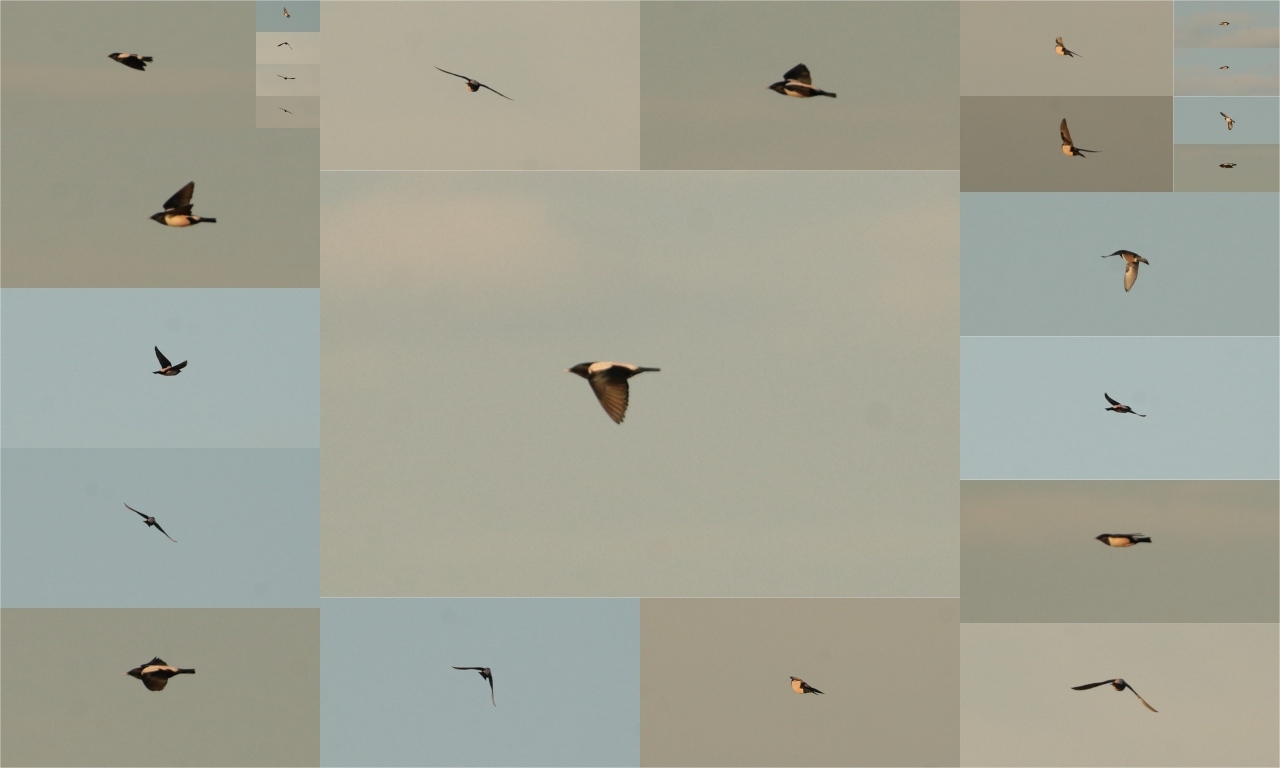
Only one picture today. It's a Gulbug (Icterine Warbler).
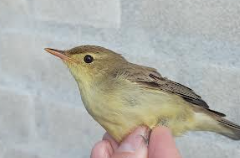
With kind regards and hopefully a more busy day tomorrow. Let's see what the day will bring.
Robert
